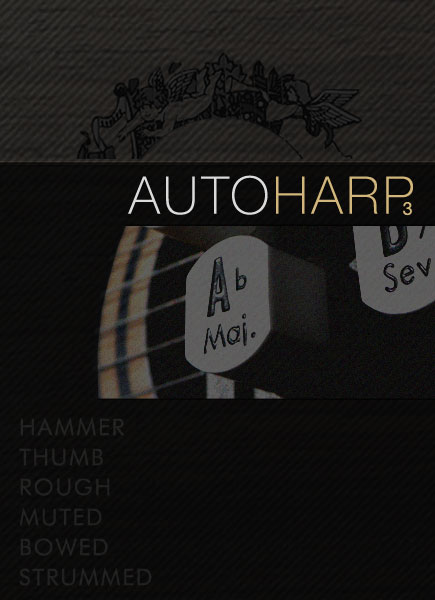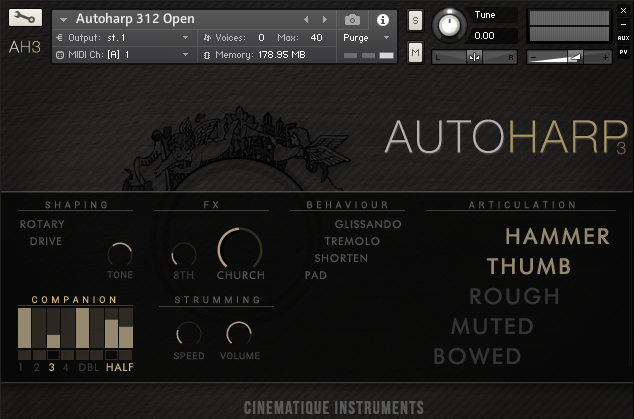 |
|
||||||||
|
This is what you get
|
Organic Sound We set a high focus on capturing the notes in a very realistic and organic way. All main articulations were recorded with cool condenser in four times round robins and 3 velocity layer. Glissando The given glissando mode is unique and fits perfectly to the sound of an Autoharp. Tremolo By activating you can easily play true tremolo triggered by the release Strumming Engine A very realistic strumming companion, which provides strumming notes and dead notes. An unique feature is the Strumming Speed Slider, which simulates the speed of the hand. |
Many Articulations To give you a huge spectrum of sound possibilities we recorded lots of different and unique articulations. Each of them is useful for a different kind of musical style:
nine reverb typles beside several different sizes you get special types such as infinite and deep valley |

Listen to some audio demos
| Movement | Till Metzner |
| Follow Your Mind | Adi Goldstein |
| Tendency | Ege |
| Cacce | Eric van Gent |
| Spiked Glass | Joel Frias |
What is an Autoharp? The Autoharp was invented at the end of the 19th century by a German immigrant in Philadelphia.
Generally it is a stringed instrument, but despite its name, the autoharp is not a harp. In fact, it´s a chorded zither
with 36 steel strings stretched over a soundbox. It has a series of chord bars, when depressed, mute all the strings other
than those that form the desired chord. by doing so, you can easily play chords. The Version 3 Our latest version, Autoharp version 3, is more than just an update of the old version. Rather,
we've re-recorded almost everything, replaced old sounds, and implemented a whole host of new features in Autoharp 3. So now
you can sound even more realistic and you can achieve more complex results. |
The Walkthrough

